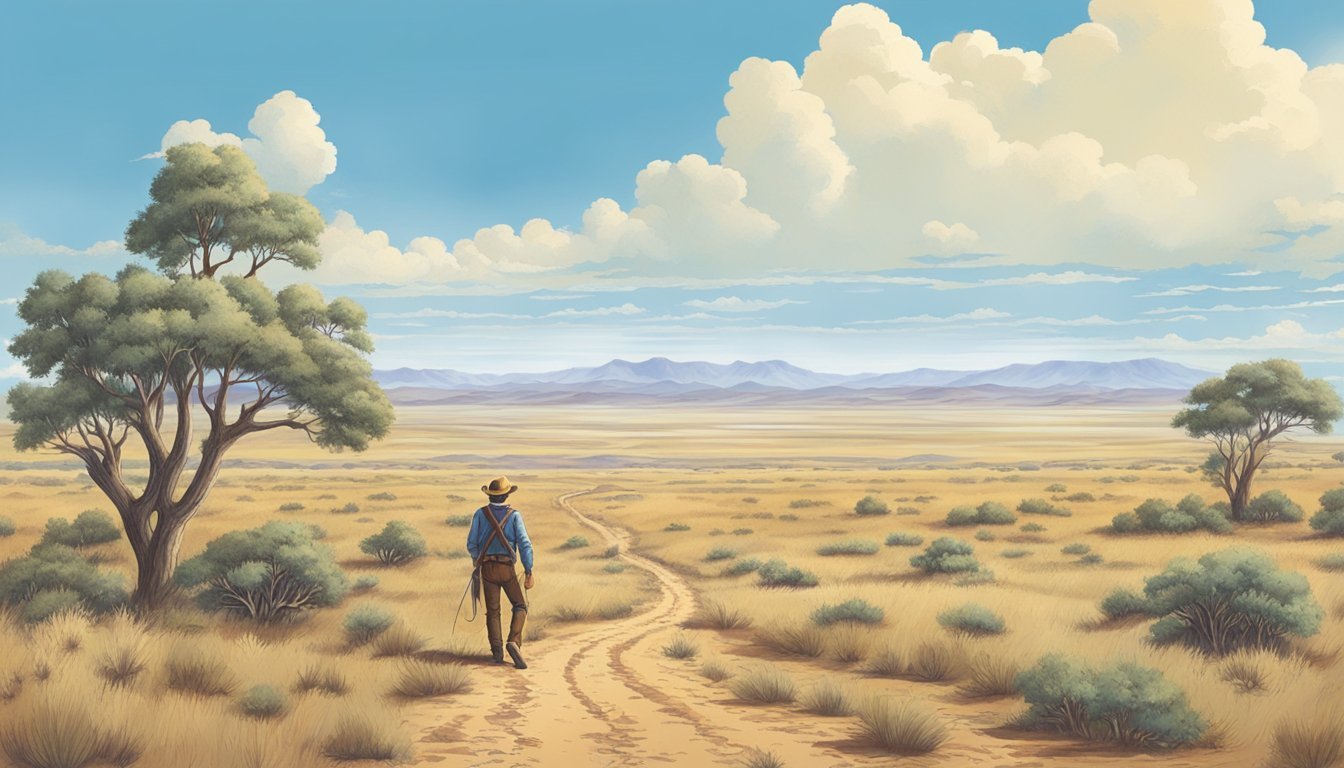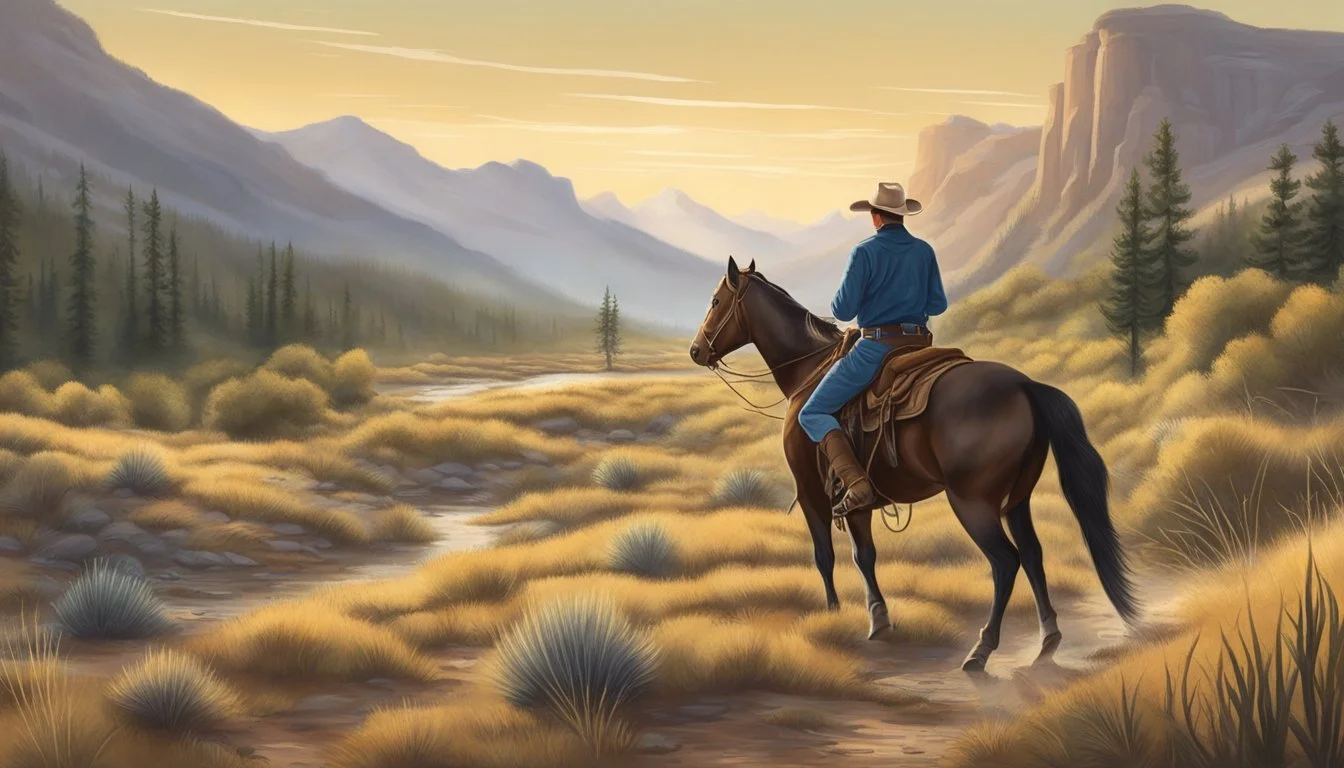The Cowboy's Guide to Wildlife Tracking and Conservation
Essential Strategies for the Trail
Tracking wildlife and preserving natural habitats have long been significant aspects of the cowboy ethos, entwined with the larger tapestry of rural life and land stewardship. Cowboys, historically versed in the ways of the land, possess a unique perspective on the relationship between man and nature. With the increasing urgency for conservation, their insight and traditional knowledge have proved invaluable. Modern conservation efforts often draw upon this heritage, combining time-honored practices with contemporary ecological understanding to ensure the sustainability of both wildlife and rangelands.
In the realm of wildlife tracking, cowboys employ meticulous observation skills honed over generations to interpret animal signs and behaviors. This expertise extends to understanding the complex dynamics of prey and predator interactions and the impacts of human activity on delicate ecosystems. As for conservation, cowboys contribute by managing herds and rangelands in a manner that promotes biodiversity, soil regeneration, and water conservation. Their strategies are crafted to mimic natural processes, thereby fostering environments where wildlife can thrive alongside cattle ranching.
A practical guide emerges from this intersection of tradition and modernity, illuminating a path forward for those committed to the stewardship of wild spaces. Such a guide not only empowers landowners and nature enthusiasts with the tools for effective tracking and habitat management but also encourages a larger dialogue on how holistic and integrated approaches can help save the world's vital ecosystems. This is more than knowledge passed down through generations; it is a blueprint for a sustainable future where human activities harmoniously coexist with the natural world.
Understanding Wildlife Tracking
Wildlife tracking is an essential skill for any cowboy who respects the balance of nature and takes an active role in conservation efforts. One acquires the ability to read the land and interpret the subtle signs left by wildlife, vital for sustaining local ecosystems and preventing biodiversity loss.
Basics of Tracking Techniques
Tracking techniques hinge on acute observation and deduction. Individuals learn to scrutinize the ground for disturbances or irregularities such as footprints, scat, or markings on vegetation. An effective tracker distinguishes between species' tracks by their shape, size, and pattern.
Footprints: Assess depth and width for weight and size estimates.
Scat: Examine for diet insights and health status.
Markings: Look on trees or soil for signs of feeding or passage.
This fundamental toolbox is a cowboy's companion on the trail, akin to a memoir of the land's use by its animal occupants.
Recognizing Animal Signs and Tracks
Reading the signs animals leave behind is crucial. Each species leaves a unique mark, a signature etched into the land.
Mammals: Paw prints often show claw marks, whereas hooves leave two-parted impressions.
Birds: Feather imprints and droppings.
Reptiles: S-shaped tracks from their undulating movement.
Insects: Tiny tracks or disturbances on the ground or vegetation.
Visual illustrations or a trail guide bolster recognition, enabling differentiation between similar species.
Trails and Trail Guide Essentials
A trail guide is not just a map but a repository of wisdom, charting pathways and important landmarks. Trails reveal the patterns of wildlife movement and hotspot areas.
Must-have elements in a trail guide:
Topography: Display of terrain to assess the difficulty of tracking.
Water Sources: Attract diverse species, serving as excellent sites for tracking.
Observation Points: Strategic locations for monitoring without disturbing wildlife.
Skilled use of a trail guide promotes non-intrusive tracking, contributing to wildlife conservation.
Advanced Tracking Methods
For those engaged in advanced tracking, techniques become more analytical. It may involve:
Track Traps: Areas like mudbanks designed to capture clear prints for study.
Casting Tracks: Creating plaster casts of prints for detailed examination.
Remote Sensing: Utilizing technology like camera traps or drones for minimal impact monitoring.
While not as traditional as hoof and ground methods, advanced techniques offer invaluable data without significant ecological interference.
Wildlife tracking done respectfully helps manage resources and combat biodiversity loss. For the cowboy at heart or professional rangers, it's a pursuit demanding precision, patience, and a profound commitment to nature's delicate balances.
Wildlife Conservation Principles
Understanding and implementing key principles of wildlife conservation is essential for maintaining biodiversity and ensuring sustainable management of rangelands, which are critical for both wildlife habitat and agricultural productivity.
Biodiversity and Its Importance
Biodiversity encompasses the diversity within species, between species, and of ecosystems. It is crucial as it supports ecosystem services that are foundational for life on Earth. A rich variety of species contributes to the resilience of ecosystems against threats such as climate change. Additionally, biodiversity loss can destabilize ecosystems and diminish their ability to cope with environmental pressures, underlining the urgency in conserving diverse habitats.
Holistic Management in Rangelands
Holistic management in rangelands prioritizes the interconnections between land, animals, and people, aiming for sustainable environmental stewardship. This approach recognizes the sociopolitical future of landscapes by integrating HM principles to balance ecosystem processes. It advocates for managing livestock in a way that mimics natural grazing patterns, which can enhance soil health and biodiversity, stitching together the fabric of a thriving ecosystem.
Soil Conservation and Rangeland Health
Soil conservation is a linchpin for rangeland health, playing a pivotal role in the ecosystem's productivity and resilience. The soil surface acts as a foundation that supports all terrestrial life. Strategies for soil conservation include preventing erosion, maintaining ground cover, and promoting natural organic matter buildup within the soil, which in turn can bolster the rangeland's capability to withstand and adapt to climate change.
Strategies for Green Grass Preservation
Preserving green grass, particularly in the spring, is vital for the health of rangelands. Green grass signifies productive rangelands and provides essential nutrition for wildlife. Strategies for its preservation involve:
Rotational Grazing: Implementing rotational grazing to give grasslands time to recover.
Plant Diversity: Encouraging a diverse mix of plant species to secure year-round forage and protect against biodiversity loss.
Water Management: Efficient water usage and management to ensure that soil remains moist and grasses stay green, enhancing the rangeland's resilience to climate variability.
By incorporating these principles, not only does one contribute to the present well-being of the ecosystem, but also secures a more robust foundation for the future of wildlife conservation and rangeland management.
Ranching and the Environment
Ranching practices are deeply intertwined with environmental health, especially in grasslands ecosystems. As stewards of vast rangelands, cowboys and ranchers play a vital role in the conservation and sustainable management of these areas.
Integrating Cowboy Traditions with Conservation
Modern ranchers integrate traditional cowboy practices with innovative conservation efforts. By applying holistic management techniques, they ensure that rangelands remain productive and biodiversity-rich. Adapting strategies from the natural grazing behaviors of native species like bison, ranchers can enhance soil health and stimulate grassland regeneration.
The Role of Herbivory in Grassland Dynamics
Grasslands thrive under proper herbivory, a process where plants are consumed by grazing livestock. This interaction is crucial for maintaining dynamic ecosystems, as it simulates the ecological impact historically imposed by bison. Ranchers monitor grazing patterns to mimic these natural processes, thus contributing to a balance between forage availability and wildlife needs.
Managing Livestock for Sustainability
To manage livestock for sustainability, ranchers must carefully balance livestock numbers with the carrying capacity of their land. They employ strategies such as rotational grazing, where cattle are moved through paddocks, allowing grasslands to recover. This method benefits the soil, plant life, and the overall health of the ecosystem — key pillars of any cowboy's guide to responsible ranching.
Personal Insights from a Cowboy's Life
The shared stories from the lives of Tony Malmberg and other cowboys provide authentic insight into the intricate balance of wildlife tracking and conservation. They exemplify a deep understanding of the land and its creatures.
Tony Malmberg: A Rancher's Story
Tony Malmberg, a seasoned rancher, approaches wildlife tracking and conservation with a unique perspective, shaped by years spent working intimately with the land. His memoir offers a firsthand look at how productivity on a ranch is synonymous with sustainable stewardship. Malmberg highlights the importance of understanding the soil, asserting that a rancher's productivity is as healthy as the soil is vibrant.
Key practices for sustainable ranching:
Close monitoring of wildlife migration patterns
Responsible grazing techniques that promote soil regeneration
Adoption of conservation practices that support local ecosystems
From the Soil to the Soul: A Memoir
The memoir of a cowboy goes beyond daily tasks, it explores the deeper connection between the soul of the cowboy and the soil they cherish. This relationship is underpinned by a respect for the natural world and a commitment to conserving it for future generations. Cowboys like Malmberg have long recognized that the health of their livestock, the resilience of the land, and ultimately their own well-being are interconnected.
Essential elements of a cowboy's conservation ethic:
Building a symbiotic relationship with the land
Honoring the land's history and its native species
Educating others about the importance of preserving the natural habitat
In translating these personal insights into the wider context of wildlife tracking and conservation, the cowboy's guide becomes clear: knowledge, respect, and mindful practice are key to coexisting with nature.
Advancement in Cowboy's Medical Knowledge
Advancements in medical techniques have revolutionized the way cowboys, particularly those in the field of orthopedic surgery, approach shoulder injuries. Emphasis on minimally invasive procedures and a deeper understanding of shoulder anatomy have significantly improved outcomes for challenging cases.
Understanding Arthroscopic Shoulder Surgery
Arthroscopic shoulder surgery is a minimally invasive technique used by shoulder surgeons to diagnose and treat a variety of shoulder conditions. This procedure involves making small incisions and using specialized instrumentation to gain a clear view of the shoulder structure—a technique often akin to a rodeo of precision, working within the tight confines of the joint.
Rotator Cuff Injuries: Diagnosis and Repair
The rotator cuff, a critical group of muscles and tendons stabilizing the shoulder, is prone to injuries. Diagnosis involves detailed imaging and physical assessments. Rotator cuff repair has become increasingly successful with the advent of advanced arthroscopic techniques, allowing for more effective management of rotator cuff tears.
Acquiring Surgical Skills via Digital Media
Shoulder surgeons are now enhancing their surgical skills through digitally enhanced illustrations and surgical videos, which offer a 3-dimensional learning environment. These resources are instrumental in understanding the intricacies of procedures such as rotator cuff repair and shoulder arthroscopy, contributing to a more thorough preparation for handling shoulder roundup in challenging cases.
Conclusion
In synthesizing the tenets of wildlife tracking and conservation, cowboys become pivotal stewards of the land. They wield a traditional knowledge enriched by technological advances, ensuring that their role is not only one of managing livestock but also of safeguarding biodiversity.
Tracking techniques, from the early practices of tagging and banding to the modern integration of data science and IoT technologies, afford them a comprehensive view of wildlife patterns. Conservation efforts benefit from these insights, tailored to maintain a sustainable balance between human activity and wildlife habitats.
Here are key takeaways for cowboys on this journey:
Understanding Migration: Knowledge of animal migration routes is crucial in mitigating conflicts and conserving species.
Participatory Action: Engaging with local communities fosters a collective effort towards conservation.
Technological Integration: Leveraging IoT and data science improves tracking accuracy and informs decision-making processes.
Continuous Education: Staying informed of research and technological advancements ensures that conservation strategies evolve.
By implementing this guide’s practices, a cowboy not only preserves the legacy of the American West but also contributes significantly to the vitality of our natural world.







